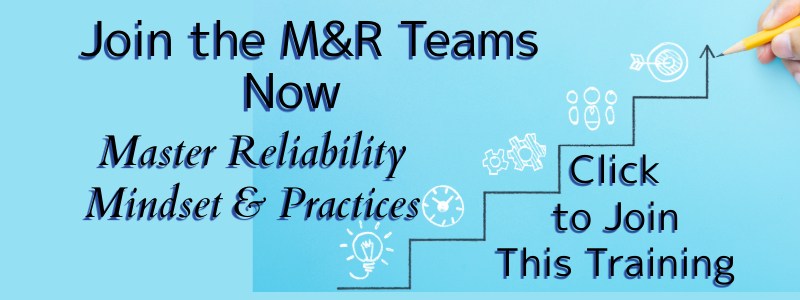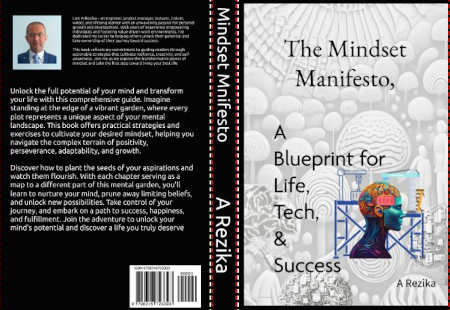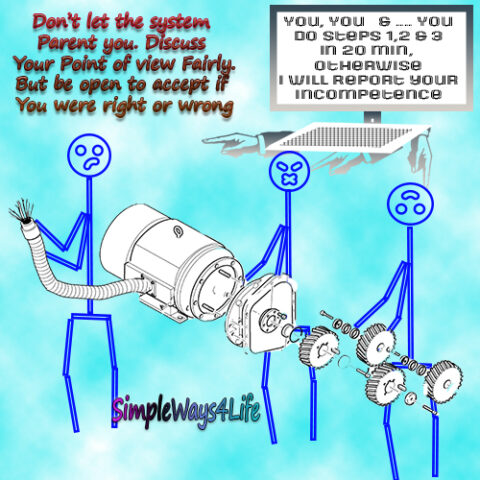The ability to leverage one’s ecosystem while maintaining autonomy represents a sophisticated balance in personal development. It’s like being a skilled sailor on the journey to drive his autonomous mindset. He knows how to harness the winds and currents while staying firmly in control of their vessel’s direction – his mind-. Your ecosystem – whether professional, personal, or social – is not just a backdrop but a dynamic force that can either propel you forward or create resistance.
In the previous chat we had sailed through:
- Ecosystem Mapping
- Navigating a Mixed Ecosystem
- Practice Effective Communication
Now It is time to continue the journey to an Autonomous Mindset which is detailed in our booklet “A Guide to Drive your Autonomous Mindset”
Ready to transform your mindset? Click and Get your copy > Now For Sale on Simpleways.life & Amazon
Limit Dependence on External Validation and focus on your journey
Relying on external validation undermines autonomy by shifting your center of gravity—the source of your motivation and self-worth—to external sources. This can take the form of seeking compliments, rewards, increased workloads, or even likes and follows on social media. While external recognition can feel gratifying, over-reliance on it creates a significant risk: when the validation decreases or disappears, it can leave you feeling stuck, unable to move forward, and questioning your abilities. The true challenge lies in breaking free from this trap by cultivating intrinsic motivation and developing a sense of self-worth that doesn’t rely on others’ approval. Let’s see how to escape this trap.
Decision-Making Autonomy:
Commit to making at least one decision daily without consulting others. Start with simple choices and gradually progress to more significant ones. This practice helps you build confidence in your ability to make decisions independently and reinforces your sense of autonomy.
A Practical Example: He used to rely on his friends’ opinions for even minor decisions, such as where to eat. One day, he decided to choose a restaurant on his own without seeking their input. His friends appreciated his initiative, and over time, he became more confident in making choices. As his experience grew, he even became the go-to person in his group for recommendations, further boosting his self-assurance and autonomy.
How to start now? What is one decision you can make today on your own, and how will committing to it help you trust your judgment more

CUSTOMPRICE-TO2JAN26
Feedback Fast:
Before seeking input from others, commit to working on a task independently and conducting a thorough self-evaluation. This practice sharpens your ability to assess your work critically, ensuring you present your best effort while reducing reliance on external feedback through your journey.
A Practical Example: You can find it in the Booklet “Autonomous Mindset”
How to start now? What is one task you can complete and self-review today before seeking feedback, and how will this practice enhance your confidence and independence?
Expand Learning and Knowledge
Expanding your knowledge and learning new skills are essential components of an autonomous mindset. This step builds on the foundations of Discipline, Motivation, Goal Setting, and Awareness, enabling you to take control of your growth and adapt to new challenges. By actively seeking opportunities to learn and applying what you discover, you create a self-sustaining cycle of improvement that reinforces your autonomy. Developing new skills not only broadens your capabilities but also boosts your confidence and independence as you rely on your own efforts to achieve meaningful results.
Skill-Building Plan
Dedicate specific time each day or week to learning a new skill that aligns with your goals or interests. Use online resources, books, or hands-on practice to acquire and refine this skill. Treat these resources as part of the external support system you’ve built, ensuring they complement your autonomy rather than replacing it.
A Practical Example: An engineer sets aside 30 minutes daily to learn Photoshop using online tutorials. After just one week of consistent effort, he applies his newfound skills by designing a flyer for a friend’s business. This project not only sharpens his abilities but also gives him confidence in his capacity to learn independently.
How to start Now? You can find it in the Booklet “Autonomous Mindset”
Teach Yourself Projects
A project is a temporary endeavor undertaken to create a unique, viable product, service, or result. It is characterized by a defined start and end time, making it distinct from routine tasks or ongoing operations. Projects typically aim to achieve specific objectives within a given timeframe. Taking on self-driven projects allows you to learn through experience and problem-solving. These projects challenge you to find creative solutions and master tools or techniques, fostering a deeper understanding and sense of accomplishment.
A Practical Example: You can find it in the Booklet “Autonomous Mindset”
How to start Now? What is one small project you can start today to teach yourself a new tool or skill, and how will completing it help you grow more confident in your abilities?

CUSTOMPRICE-TO2JAN26
Reflect and Adjust your journey to reach the autonomous mindset
Reflection and adjustment are the capstones of building an autonomous mindset, ensuring that your efforts align with your goals and continue to evolve. This stage emphasizes learning from your experiences, identifying areas for growth, and making deliberate changes to improve. Reflection fosters self-awareness, while adjustments keep you on track, creating a dynamic loop of progress and self-improvement.
Weekly Review
Set aside time at the end of each week to reflect on your independent actions and assess areas for improvement. Analyze what worked well, what didn’t, and how you can refine your approach moving forward.
A Practical Example: At the end of the week, a junior writer evaluates her progress toward her goal of writing a book. She notices that her most productive writing sessions happen in the morning. To capitalize on this, she adjusts her schedule to prioritize writing during those hours.
Autonomy Scorecard
Develop a daily or weekly habit of rating key autonomy-related traits, such as decision-making, discipline, and resilience. Use these scores to monitor growth and pinpoint areas that need more attention.
A Practical Example: A maintenance lead uses an autonomy scorecard to evaluate himself daily, rating his decision-making (7/10), discipline (6/10), and resilience (8/10). Reviewing his scores for the week, he realizes discipline is a weak spot. He commits to minimizing distractions by turning off notifications and creating a focused work environment.
How to start now? You can find it in the Booklet “Autonomous Mindset”
In Conclusion,
Remember, you can’t control the behavior of others, but you can control your own reactions. You can enjoy the journey to drive your autonomous mindset by limiting the dependence on external validation, expanding your learning and knowledge and reflecting back and adjusting.
By practicing these exercises and referring to the examples, you can develop an autonomous mindset more efficiently and effectively.
If you feel you need help with any of these ideas we discussed, request a Management Consultancy or Coaching Services From our Store










